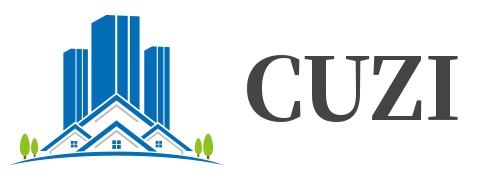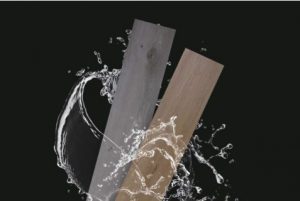In the process of home decoration, the choice of board will not only affect the decoration style, but also the decoration quality and even comfort. The selection of board should be based on the decoration budget, design style, maintenance difficulty and the characteristics of different boards. Now we will show you the commonly used boards in home.
Plywood
In the field of furniture manufacturing, plywood is an indispensable and important material. Whether it is a simple and modern home style or a retro and classic furniture style, plywood can perfectly interpret the designer’s creativity and the personalized needs of consumers with its superior processing performance and rich surface decoration effects.
Plywood is usually composed of an odd number of layers of veneer, and the fiber directions of adjacent layers of veneer are perpendicular to each other. This structure makes the physical and mechanical properties of plywood relatively balanced in all directions, with characteristics such as small deformation, small shrinkage, and smooth surface. The physical and mechanical properties in the longitudinal and transverse directions are relatively small, so it can perform well in various applications. Commonly used types of plywood include 3-ply board, 5-ply board etc, with various specifications, usually 1220×2440mm in length,3、5、9、12、15、18mm or other thickness options.
Environmental protection and sustainability: the choice of green home
With the improvement of environmental awareness, consumers pay more and more attention to the environmental performance of home decoration materials. Plywood is a man-made board, and the waste in its production process can be recycled, reducing the waste of wood resources. At the same time, with the advancement of technology, more and more environmentally friendly glues are used in the production of plywood, reducing the release of harmful substances such as formaldehyde, making plywood the preferred material for green home.
Specific applications in home decoration
Floor: Plywood floor is wear-resistant, moisture-proof, easy to clean and maintain, and relatively affordable, making it the first choice for many families.
Wall decoration: Using the stability and diversity of plywood, you can make a variety of unique wall decorations, such as background walls, partitions, enhance the artistic atmosphere of the home.
Furniture production: Plywood is an ideal material for making furniture. Its strength and stability ensure the durability of furniture. At the same time, the variety of textures and color options also provide more possibilities for furniture design.
Ceiling: Plywood is easy to process and can be used to make ceilings of various shapes, such as suspended ceilings, light troughs etc, to add a sense of hierarchy to the home space.
Fiberboard
Fiberboard, also known as density board, is a board made of plant fiber as the main raw material through hot grinding, gluing, paving, hot pressing and other processes. According to the density, fiberboard can be divided into low-density fiberboard (LDF, density less than 450 kg/m3), medium-density fiberboard (MDF, density between 450~800 kg/m3) and hardboard (HDF, density higher than 800 kg/m3).
Application:
Wide application: Fiberboard has been widely used in modern home decoration and furniture manufacturing due to its uniform material, small longitudinal and transverse strength difference, and not easy to crack. Whether it is wall decoration, ceiling, floor, or furniture making, such as desks, wardrobes and bed frames, fiberboard plays an important role.
Beautiful and durable: The surface of fiberboard is flat, easy to paint and veneer, and can provide beautiful and durable decorative effects. This makes fiberboard an ideal choice for home and commercial space decoration.
Environmental performance: With the improvement of environmental awareness, the environmental performance of fiberboard has also received more and more attention. In the modern fiberboard production process, the environmental performance of fiberboard has been significantly improved by adopting environmentally friendly adhesives and additives, as well as strict manufacturing processes. This allows fiberboard to meet environmental protection requirements while meeting decoration needs.
Although fiberboard occupies an important position in decoration boards, some problems should be paid attention to during use. For example, fiberboard has poor waterproof performance and is prone to water absorption and expansion when exposed to humid environments for a long time, resulting in deformation or damage. Therefore, when using fiberboard, it is usually necessary to waterproof it or choose to use it in a dry environment. In addition, the fire resistance of fiberboard is relatively low, and it is easy to burn when encountering high temperatures. Therefore, in occasions with high fire protection requirements, it is necessary to use it with caution or choose fiberboard with fire resistance.
Melamine board
The full name of melamine board is melamine impregnated film paper veneer artificial board. It is a decorative board made by soaking paper with different colors or textures in melamine resin adhesive, drying it to a certain degree of solidification, and then paving it on the surface of particleboard, moisture-proof board, medium-density fiberboard, plywood, blockboard, multilayer board or other hard fiberboard, and finally hot pressing it.
Performance characteristics
Wear and scratch resistance: After the melamine resin is cured, the veneer has good wear and scratch resistance.
High temperature resistance: Melamine board has a certain high temperature resistance and can resist general heat.
Chemical resistance: It can resist the abrasion of general acid, alkali, grease and alcohol and other solvents.
Easy to maintain and clean: The surface of melamine board is smooth and bright, easy to maintain and clean.
Uses and advantages
Uses: Melamine board is often used in interior architecture and decoration of various furniture and cabinets due to its excellent performance and diverse decorative effects.
Advantages: Compared with natural wood, melamine board has the advantages of not easy to deform, bright color, wear-resistant and corrosion-resistant surface, and the price is relatively economical.
Particleboard
Particleboard, also known as particleboard or solid wood particleboard, is widely used in decoration, mainly in the following aspects:
Particleboard is an important material for making various furniture, such as wardrobes, bookcases, beds, tables, chairs, etc. Due to its internal granular structure, particleboard has excellent lateral load-bearing capacity and can withstand the weight of furniture without deformation. At the same time, particleboard has a smooth surface, realistic texture, beautiful appearance, suitable for various veneer treatments, and can meet the design needs of furniture of different styles.

